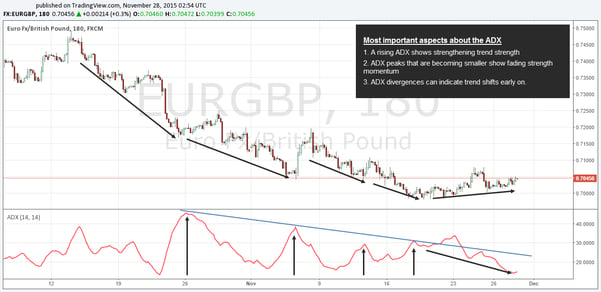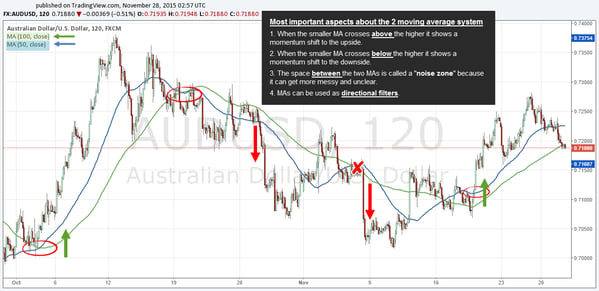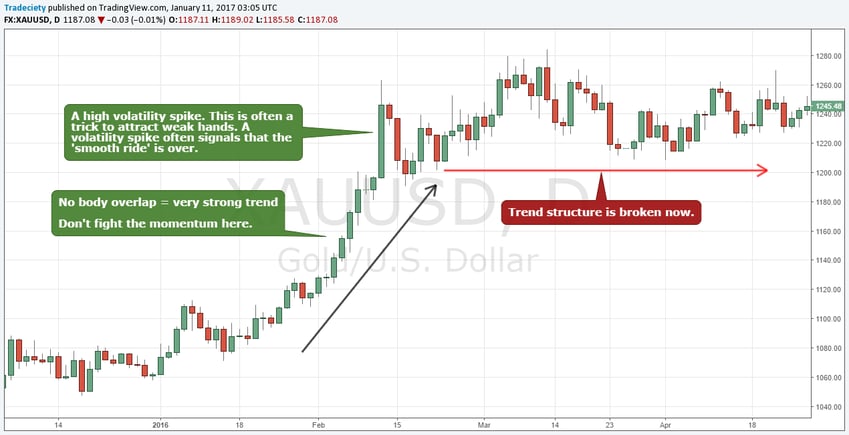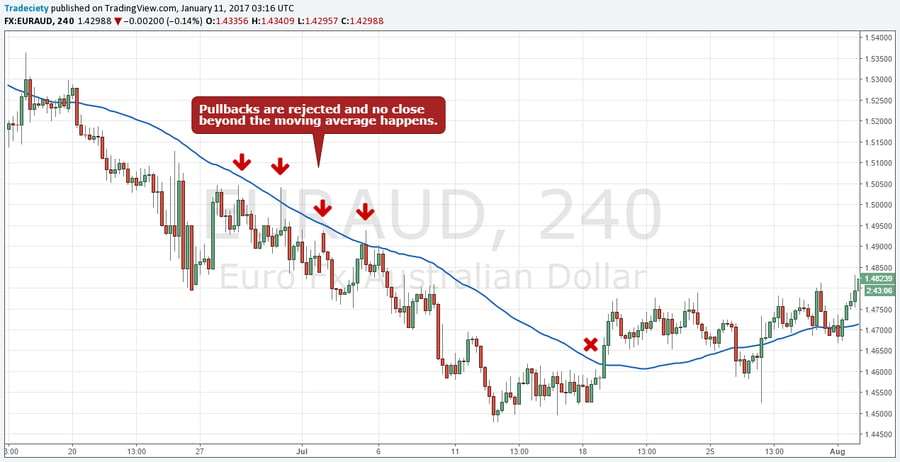how to know strength of trend (part2)
3) BULLS VS. BEAR AND MICROSTRUCTURES
We already touched on this topic when we talked about pullbacks earlier but there are a few more things that we can use to our advantage when it comes to analyzing the dynamics between bulls and bears during trending phases. There are a few things a trader needs to be aware of when analyzing a trend and tries to estimate the strength:
- A trend where candle bodies do not overlap signals strong strength because price keeps going in one direction without pulling back significantly
- When candlesticks show no or only small wicks, it also signals a strong and healthy trend
- Candlesticks are roughly the same size and are not too large. If you see that suddenly candlesticks are becoming very large, it means that volatility is increasing. This often happens when markets approach a top or a bottom
- If you see gaps, especially in the daily timeframe, those gaps don’t close and price keeps trending
4) REJECTED REVERSALS
The way failed breakouts and rejected reversals occur on your charts is a big tell as well. Here are the most important patterns and characteristics when it comes to analyzing failed reversals during trends:
- Price does not overshoot trendlines or when it does, it never closes beyond a trendline
- When a trendline breaks, there is only a sideways move and no immediate reversal
- Reversal spikes get immediately rejected and covered
- Pullbacks into moving averages are very quick and price does not stay long at a moving average
5) ADX
The ADX measures trend strength and it is non-directional which means that it cannot tell you which direction price is going – it only tells you if the trend is gaining or losing momentum.
The chart below shows a downtrend and the first down-movement shows a lot of strength in the ADX by making a new high and absolute on the ADX. The next two bearish moves were much smaller and not as strong and the ADX confirmed it by showing lower highs. The last move on the far right showed a very choppy and narrow movement and the ADX went dipped at that point, the price had entered a range.
- A rising ADX shows gaining trend strength
- New highs on the ADX signal a healthy trend
- Lower highs on the ADX signal losing strength
- A “hook” on the ADX shows a sudden shift in trend strength
- A flat or an ADX heading down signals a range
6) MOVING AVERAGES (MA)
THE RELATION OF PRICE TO THE MA AND THE SLOPE
Moving averages are a great trading tool because they provide a variety of different information at once. First, the slope of a moving average is important. When the price is above the MA and the MA is moving up it signals a strong trend with prices rising faster than the historical averages. The further price can pull away from a moving average, the stronger the current trend is. The longer price can stay on one side of the moving average without touching the moving average, the stronger the trend.
THE MA CROSSOVER – SENTIMENT SHIFTS
The combination of a smaller and a larger moving average measures sentiment shifts in price. The screenshot below shows a chart with a 50 and a 100 MA. When the small MA crossed above the larger MA it signaled a shift in sentiment to the upside because recent prices were moving above the average of the longer term price structure. Conversely, when the shorter MA crossed the larger MA it signaled a sentiment change to the downside because recent price started trading below the longer-term average.
THE SPACE BETWEEN MAS – MOMENTUM INFORMATION
Finally, the bigger the space between the two MAs, the stronger the trend is becoming because the recent price is pulling away from the long-term average faster. The size of space between the two MAs provides information about momentum. The MACD or the Ichimoku indicators are both based on the differences between short term and long term average price structure.

- Generally, price above a moving average signals an uptrend [read about Marty Schwartz’s trading tips]
- When the short-term MA crosses above the long-term MA, it signals a bullish trend shift
- When the space between the two MA increases, momentum increases as short-term prices pull away fast from the longer-term average price





































